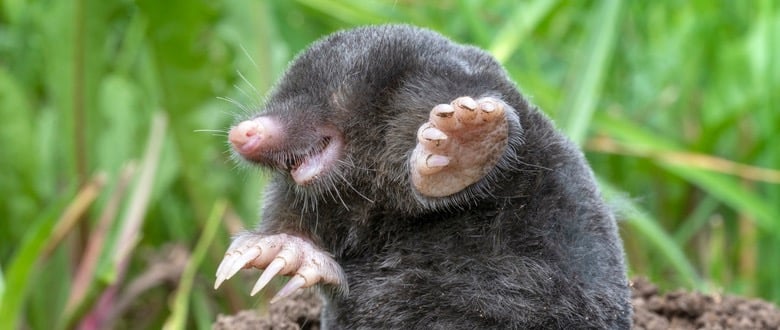The Underground Architect - The Mole
Wellcome into the marvelous world of animals with the Animal Story Folders 🦝🦋🐾, my favourite material found in the Biology chapter Introducing Animals! 🌿 These folders are designed to ignite curiosity and prepare children for independent research. Through engaging oral presentations and beautifully organized folders, children explore essential topics like animal names, habitats, diets, physical features, reproduction, life cycles, and predators. This material provides a foundation for critical research skills while fostering a deep connection to the animal kingdom. Whether it’s uncovering the secrets of a raccoon’s night vision 🦝, a butterfly’s life cycle 🦋, or the survival tactics of a snow leopard 🐆, these folders encourage children to ask questions and seek answers.🐾📚
BIOLOGY STORIES
12/4/20243 min read


Beneath the surface of fields, gardens, and parks 🌱, hidden from our sight, lives an amazing little creature. With tiny eyes and a velvety black coat, the mole (Talpidae) spends most of its life digging tunnels and exploring the underground world 🕳️. Though you might never see one in action, you’ve likely spotted the small hills of dirt it leaves behind—these are molehills, signs of its incredible digging abilities!
Each molehill is made from the soil the mole pushes up as it digs its tunnels. These little “mountains” show us just how busy the mole is underground. Some mole networks can stretch for hundreds of feet, with different tunnels for traveling, hunting, and resting 🐾. The mole’s digging not only creates shelter for itself but also helps aerate the soil, making it healthier for plants to grow. Next time you see a molehill in the park, you’ll know there’s a hardworking architect below!
The mole’s front paws are its most impressive feature. Shaped like shovels and equipped with sharp claws 🐾, they’re perfect for digging through soil. A mole can dig up to 18 feet of tunnels in just one hour! It uses these tunnels not just as a home but also as a trap to catch its favorite food: worms 🪱 and insects 🐜. The mole can even store worms for later, keeping them fresh by biting off their heads!
Though they have tiny eyes, moles don’t rely on sight. Instead, their sense of touch is extraordinary. The mole’s snout is covered with hundreds of tiny nerve endings, making it incredibly sensitive and able to detect the slightest movement of prey underground 🌟. This keen sense helps the mole thrive in the darkness beneath the earth.
Moles are solitary creatures, fiercely protective of their tunnels. However, during the breeding season, they briefly come together to mate. Afterward, the female raises her young—called pups—alone in a cozy underground nest made of grass and leaves 🍃. The pups grow quickly, and within a month, they are ready to dig their own tunnels and explore the world beneath the soil.
Moles have also burrowed their way into folklore and cultural stories. In some Native American traditions, the mole is seen as a symbol of digging deep for hidden truths 🕳️🌟. Its underground lifestyle is often associated with introspection and discovering what’s beneath the surface, both literally and spiritually. In European folklore, molehills were sometimes seen as omens—people believed that finding a molehill in a field could mean good luck for crops 🌾. However, some old tales also said moles could bring mischief if they dug too close to homes!
📜 Scientific Name: Talpidae
📏 Order: Eulipotyphla
🌳 Family: Talpidae
📐 Average Size: 10–16 cm (4–6 inches)
⚖️ Average Weight: 70–120 grams (2.5–4.2 ounces)
🕰️ Lifespan: 3–6 years
✨ Unique Feature: Shovel-like front paws for digging and a highly sensitive snout for detecting prey
Let's see what else we can find in this Animal Folder about The Mole
Now that we’ve discovered so many amazing things about the mole, I wonder—what’s your favorite animal? 🐾 Maybe it’s one you already know a lot about, or perhaps there’s an animal you’ve always wanted to learn more about.
You can use what we’ve done today as your guide to create your very own animal folder or booklet 📚! Think about including details like the animal’s name, where it lives, what it eats, its unique features, and its predators. You can add drawings, fun facts, or even tell a story about your animal!
When you’re done, you can share your folder or booklet with us. We can all learn something new from your research, and you’ll be the expert on your favorite animal! 🌍✨ So, with what animal you will go on adventure research ?
After introducing one animal folder and demonstrating how to work with the cards in the folder—discussing what can be seen in the photos, reading the text cards, and matching them to the correct images. I will point out the rest of the animal folders, usually 4–5 additional folders with different animals . They will have the opportunity to read the kickoff stories, to examine the photos, read the text cards, and match them on their own, deepening their understanding through their independent explorations with this material in the Biology shelf. This approach fosters observation, reading, and research skills while allowing each child to follow their own interests and creativity.
With Montessori joy,
Vanina 😊

